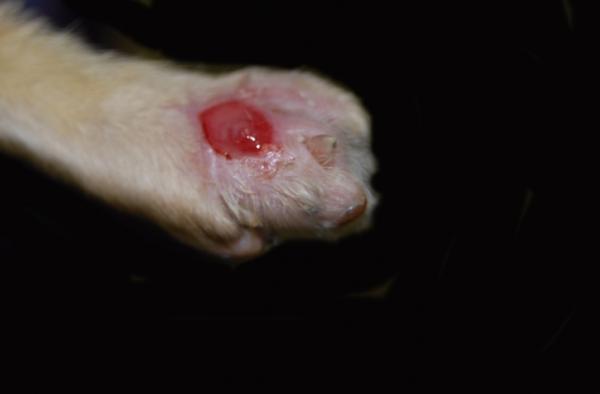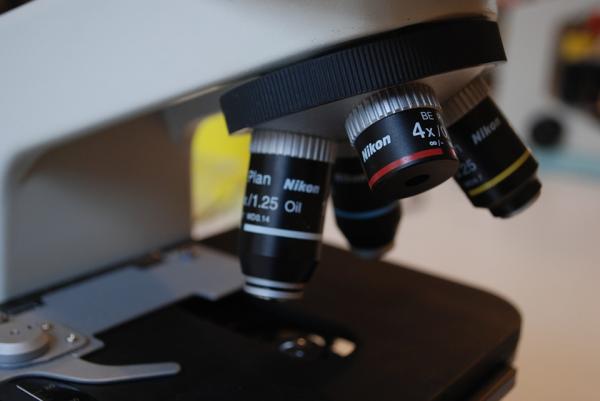Acral granuloma by licking in cats

Those who have decided to welcome a cat as a pet know that few pets are as independent and genuine as these cats, which also have impeccable hygiene habits and for this reason they do not tolerate unhygienic environments.
This need for hygiene implicit in cats can sometimes cause some problem, although we must clarify that it is not due to the hygienic habits of cats, but that certain causes predispose to licking causes a disorder.
We talk to you about acral granuloma by lick in cats, in this article we explain everything you need to know about this disorder.
What is acral granuloma by licking?
Cats lick for long periods of time due to their hygienic habits, however, excessive licking could cause skin lesion known as granuloma or acral dermatitis, a condition that affects dogs more frequently but can also occur in cats.
Acral granuloma occurs when the cat licks repetitively an area of your body up lose hair and erode the most superficial layers of the skin, this causes itching, which in turn causes a greater licking.
Another mechanism causing the aggravation of the lesion is that the damaged cells release endorphins, hormones that act as analgesics and that cause the licking to cause pleasure and not pain.
As a result of the lesion formed by the lick, the cat is susceptible to secondary infections, changes in pigmentation and thickening of the skin.

Causes of acral granuloma by lick
The causes of acral granuloma by lick in cats are diverse and can sometimes be aggravated by hygiene habits that this animal has, we can distinguish the following etiologies:
- Allergies
- Obsessive compulsive disorder
- Cancer
- Bacterial infections
- Fungal infections
- Mites
- Joint diseases
- Trauma
Symptoms of acral granuloma by lick
The symptoms that this condition presents are all located in the body area that is developing the lesion, usually located in the distal area of the legs front or rear.
Depending on the severity of the injury we can observe the following signs:
- Bulked and inflamed affected area
- Red zone in acute or hyperpigmented lesions and black in chronic cases
- The center of the lesion is ulcerated and moist, red and sometimes it also has a scab

Diagnosis of acral granuloma by lick
To make the diagnosis the veterinarian will take into account all the symptoms present as well as the clinical history of the cat, however, the priority will be to establish what is causing the granuloma acral, for this the following tests may be carried out:
- Cytology (study of cells) by scraping the affected area.
- Biopsy of the affected tissue.
- Allergy tests
- Radiography to evaluate if there is joint pathology.

Treatment of acral granuloma by lamido
Treatment of acral granuloma by licking in cats will vary depending on the cause Underlying, however, there are the following therapeutic strategies for the different etiologies of the disorder:
- Antibiotics
- Elimination of allergens
- Topical treatment with analgesics and antipruritic (decrease itching)
- Topical or injected corticosteroids in the most severe cases
- Mechanical devices that prevent licking in case of obsessive-compulsive disorder
The prognosis of the acral granuloma by licking is reserved since it is a condition very difficult to cure, especially when it is due to obsessive compulsive behavior.

This article is merely informative, in .com we do not have the faculty to prescribe veterinary treatments or make any kind of diagnosis. We invite you to take your pet to the veterinarian in case of any type of condition or discomfort.
If you want to read more articles similar to Acral granuloma by licking in cats, we recommend that you enter in our section of Other health problems.


